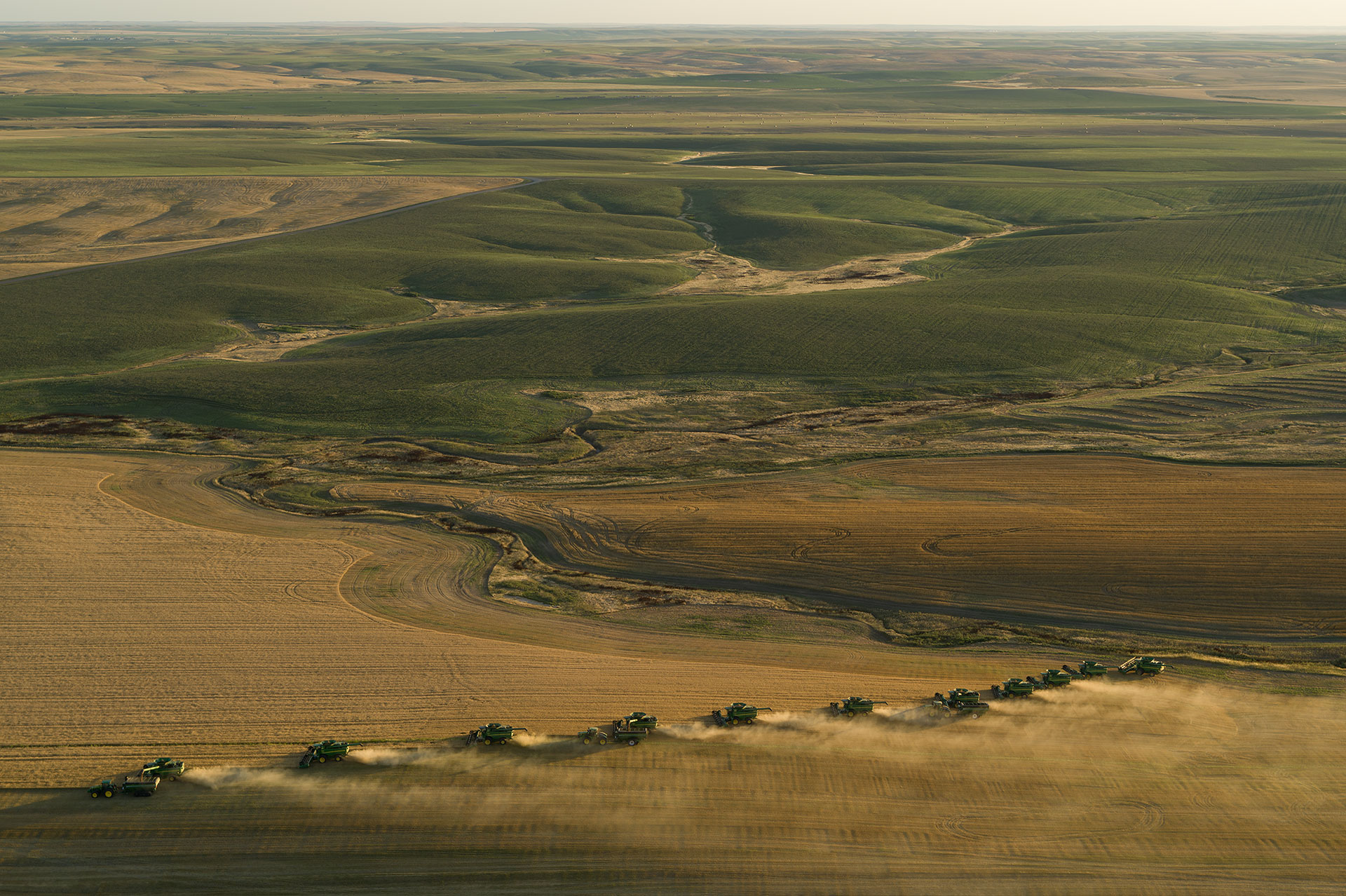At 14,000ha, Gunsmoke Farms’ farmland stretches as far as the eye can see – but change is afoot in this conventionally farmed landscape. Gunsmoke Farms grew organic wheat for the first time in 2020.
Helping with Gunsmoke Farms’ harvest is contractor, Olsen Custom Farms. Every year, between March and November, Olsen moves his workers and equipment from Southern Texas to Northern Canada to help farmers with their harvest. These 11 S-Series combines are part of an 80 strong fleet making Olsen the largest contractor in the United States, and one of John Deere’s biggest customers.
A drone and patience
Following the contractor’s crew and sitting in the cab of the machines at work, photographer George Steinmetz needed a drone and eight days of patience to achieve these aerial shots. He got what he wanted, images that would give people a glimpse of the effort that agriculture puts into supplying the growing world population with food.

Organic wheat is being harvested in this field for the first time. The retail price is $23 per bushel versus $8-9 for conventional wheat. However, organic wheat is much more difficult to harvest and the yield per hectare is about half that of conventional wheat.
Feed the Planet

Photographer
George Steinmetz
With his project – Feed the Planet – Mr Steinmetz shows, among other topics, how agriculture meets the challenge of feeding growing populations – in this instance, through high productivity. He is committed to more transparency in food production, because he thinks it affects us all: “If we know more about how our food is produced and what impact it has on the environment, we can make better decisions on what to eat.”
However, Mr Steinmetz emphasises that this cannot be broken down into a debate that pigeon-holes organic farming as good for the environment and conventional farming as bad. “Gunsmoke Farms had to make enormous efforts to get the weeds under control,” he says. “As a result, they used two to three times more diesel than before and damaged the soil through cultivation.”

